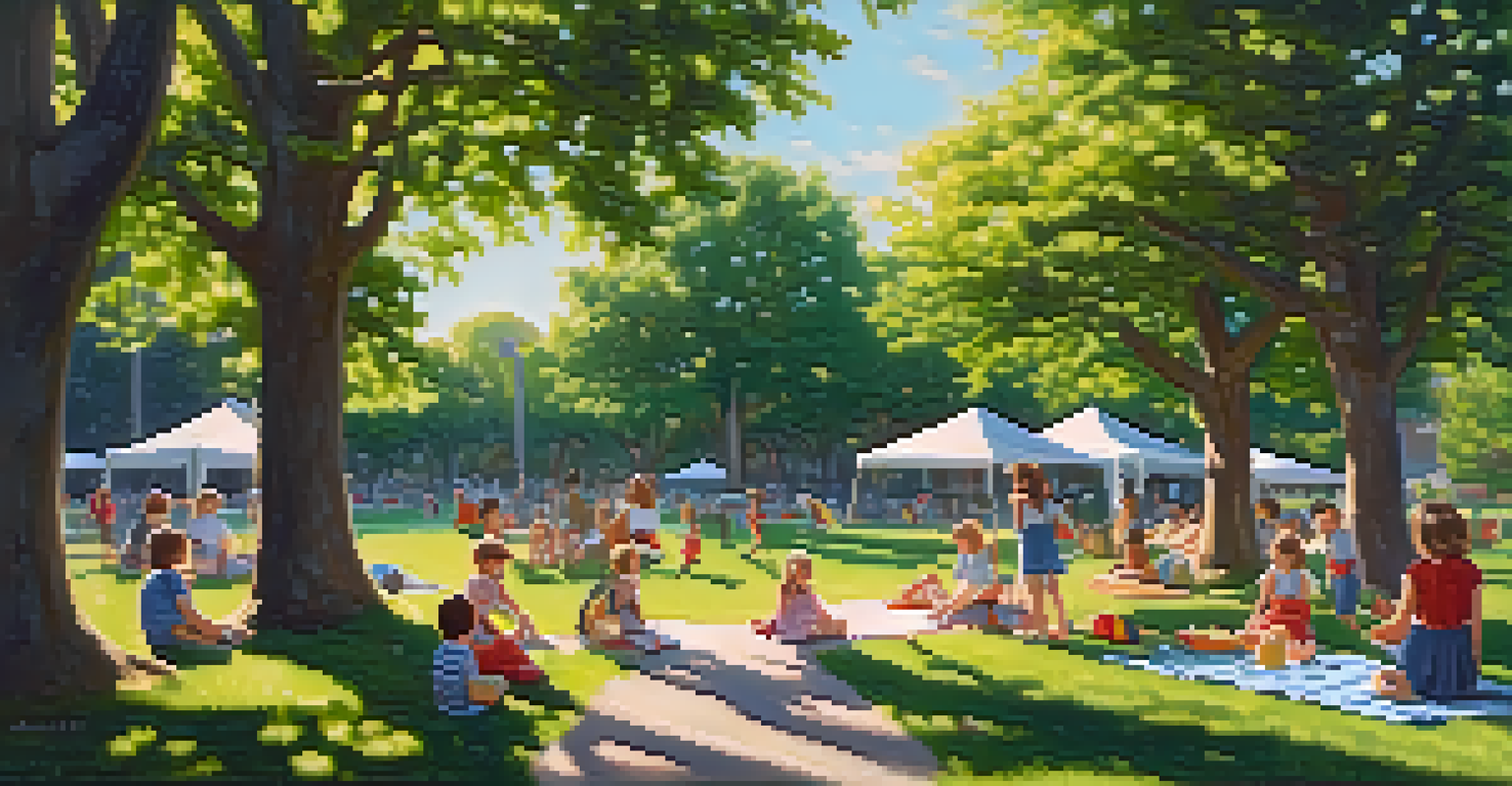Soundscapes of the Past: How Environment Affects Nostalgia

The Role of Sound in Shaping Memories
Sound has an incredible ability to transport us back in time. The rustle of leaves, the chirping of birds, or even the hum of a busy street can evoke vivid memories from our past. This phenomenon is often referred to as a 'soundscape' – the unique auditory environment we experience in different places.
Music can change the world because it can change people.
For instance, the sound of waves crashing on a beach may remind someone of childhood vacations spent by the ocean with family. Similarly, the distant laughter of children playing in a park can trigger memories of carefree afternoons spent with friends. These auditory cues create a powerful connection to our past.
Ultimately, sounds can serve as a time capsule, encapsulating emotions and experiences that shape who we are today. By understanding the role of sound, we can appreciate how it influences our feelings of nostalgia.
Environmental Factors Influencing Nostalgia
Beyond sound, various environmental factors contribute to our sense of nostalgia. The sights, smells, and even the weather of a particular place can evoke strong memories. For example, the scent of pine trees might remind someone of winter trips to the mountains, while the smell of fresh-cut grass could bring back memories of summer barbecues.

These environmental cues work in tandem with sound to create a rich tapestry of memories. A sunny day filled with laughter and music can blend seamlessly with the smell of grilled burgers, creating a nostalgic experience that feels almost tangible.
Sound Shapes Our Memories
The sounds we encounter in our environment can evoke vivid memories and emotions, creating a strong connection to our past.
Understanding these factors helps us realize that nostalgia isn't just about the past; it's also tied to our sensory experiences in the present. By being mindful of our surroundings, we can create new memories that may one day evoke nostalgia.
Cultural Variations in Soundscapes and Nostalgia
Cultural background plays a significant role in how soundscapes evoke nostalgia. Different cultures have unique sounds associated with their traditions, celebrations, and everyday life. For example, the sounds of traditional music during a festival can evoke powerful memories for individuals from that culture.
The past is never dead. It's not even past.
Consider the sound of a distant drumbeat during a celebration; it may transport someone back to their childhood, filled with family gatherings and communal joy. In contrast, someone from a different cultural background may not have the same nostalgic connection to that sound.
This cultural lens highlights the diverse ways in which soundscapes shape our memories. By appreciating these variations, we can better understand how our environments influence our feelings of nostalgia across different cultures.
The Science Behind Nostalgia and Sound
Research in psychology reveals that nostalgia is not just a fleeting feeling; it has tangible effects on our mental well-being. Studies show that nostalgic experiences can enhance mood, increase feelings of social connectedness, and even boost self-esteem. This connection is partly due to the brain's response to familiar sounds.
When we hear a sound that resonates with a past experience, our brain releases dopamine, a neurotransmitter associated with pleasure and reward. For example, hearing a favorite childhood song can trigger delightful memories, creating a sense of happiness and comfort.
Nostalgia is Sensory Experience
Nostalgia is influenced by various sensory cues, including sights and smells, which together create a rich tapestry of memories.
Understanding the science behind these reactions illuminates why soundscapes are so powerful in evoking nostalgia. By tapping into this knowledge, we can create environments that foster positive memories and enhance our emotional well-being.
Creating Personal Soundscapes for Nostalgia
We all have the power to create our own soundscapes, filled with sounds that evoke nostalgia. This can be as simple as curating a playlist of songs that remind us of specific moments in our lives. By intentionally surrounding ourselves with these sounds, we can recreate feelings of joy and connection.
For instance, if a particular song reminds you of summer road trips with friends, playing it during a gathering can instantly transport everyone back to those carefree days. Similarly, incorporating nature sounds, like birds chirping or rain falling, can enhance relaxation and foster nostalgia.
Creating these personal soundscapes not only enhances our current experiences but also lays the groundwork for future nostalgia. The sounds we choose today can become the cherished memories of tomorrow.
The Impact of Technology on Soundscapes
In our modern world, technology has transformed how we experience soundscapes. With the rise of streaming services and digital music, we can easily access a vast array of sounds from around the globe. This accessibility allows us to explore new auditory environments and expand our nostalgic experiences.
However, this shift also raises questions about authenticity. While we can listen to recordings of rainforests or bustling markets from the comfort of our homes, do they evoke the same feelings as experiencing these sounds in person? There's a certain magic in being physically present in a soundscape that technology can't fully replicate.
Technology Alters Soundscapes
While technology expands our access to diverse soundscapes, it raises questions about the authenticity of experiencing these sounds in person.
Despite these challenges, technology can enhance our understanding of soundscapes and nostalgia. By blending the old with the new, we can create richer, more diverse auditory experiences that reflect our personal histories.
Embracing Nostalgia in Everyday Life
Nostalgia is often viewed as a longing for the past, but it can also be a source of strength and inspiration in our daily lives. By embracing nostalgic feelings, we can cultivate a deeper appreciation for the present and the memories we create. This mindset encourages us to savor the small moments that may one day evoke nostalgia.
Incorporating familiar sounds into our routines, like listening to favorite songs while cooking or enjoying nature sounds during meditation, can enhance our daily experiences. These practices not only foster a sense of connection to the past but also encourage mindfulness in the present.

Ultimately, embracing nostalgia allows us to celebrate our journey through life. By recognizing the soundscapes that have shaped us, we can find joy in our memories and create new experiences that will one day inspire nostalgia.